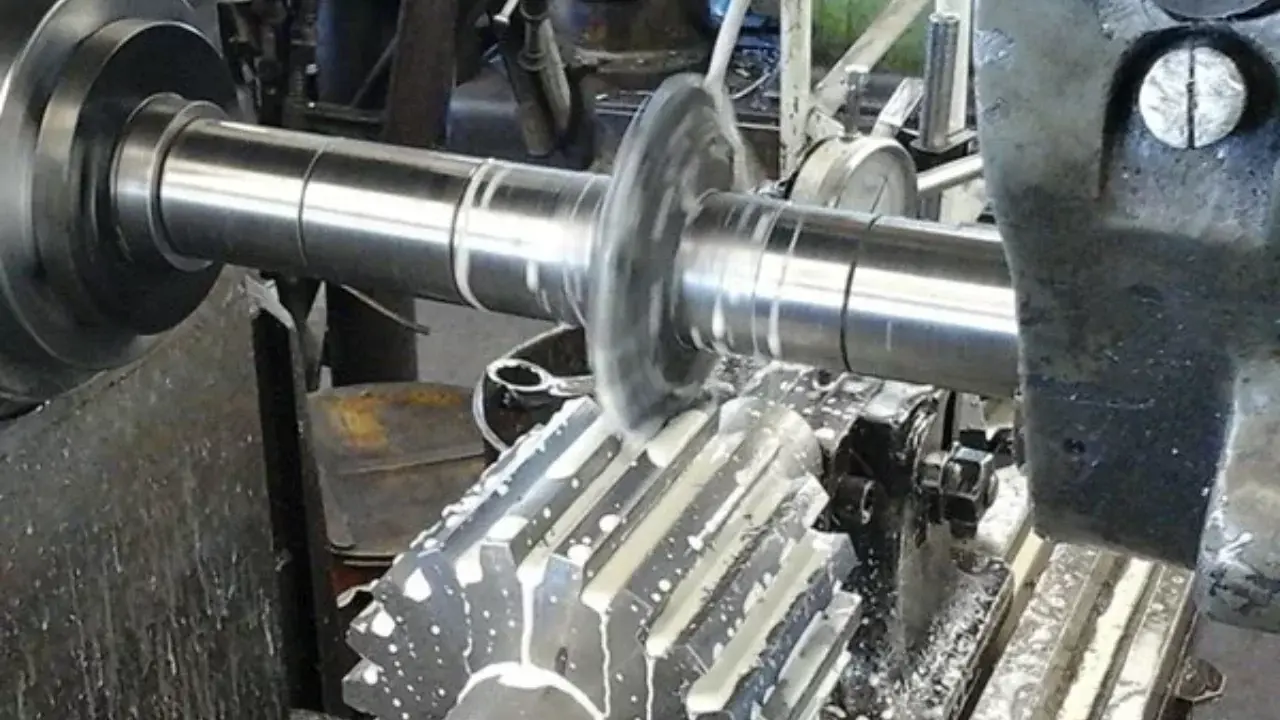1.0 Introduction
It’s a manufacturing technique that employs electrical discharges to get a particular form. Spark machining, spark eroding, burning, die sinking, and wire erosion are all terms that have been used to describe this process
CNC Milling China produces intricate geometries out of hard materials like titanium, stainless steels as well as other hardened alloys using EDM
1.1 Uses of EDM
EDM is preferred in small-volume manufacturing, as it allows for several processes. Milling, turning, tiny hole drilling, and other procedures are among them. EDM technology aids in the following applications because to its ability to generate unique and exact shapes:
i. Die Making
Die-cutting and die-shaping instruments are used to cut or shape materials into solid objects. Regardless of the size or rarity of the shape required, EDM is employed to make these dies.

ii. Mold Making
EDM is frequently used to achieve the correct mold diameter, depth, and form. Mold makers utilize it as their primary injection molding method. The most common form of EDM used in mold production is wire EDM.

iii. Drilling tiny Holes
EDM technology is a fast and suitable approach to drill precise deep tiny holes in materials of any hardness.EDM may also be used to drill holes in inclined surfaces and other challenging areas.
2.0 EDM Working Principle
The DC power supply provides the energy required for the spark to occur. The DC-power source is controlled by the EDM system, which turns the spark energy on and off and supplies the precise amount of electricity to each spark.
The strength of the dielectric fluid determines how often sparks occur between the electrode and the workpiece. A typical hydrocarbon oil fluid has a dielectric strength of 170 volts per millimeter (170V/mm).
The electrode is moved closer to the workpiece until the distance between them reaches 0.001 inch (0.025 mm).
Dielectric fluid fills the gap between the electrode and the workpiece. A voltage of 170 V is provided between the electrode and the workpiece during the electrode advance period.
The dielectric fluid ionizes and transforms from an electrical insulator to an electrical conductor when the voltage is 170 V and the spacing is 0.001 in. (0.025 mm). The ionized dielectric fluid conducts electricity from the electrode to the workpiece. After the dielectric fluid has been ionized, electricity continues to flow through it until it is switched off.
When the power is shut, the dielectric fluid deionizes and the fluid returns to being an electrical insulator. The voltmeter will display open-circuit voltage when the power source is turned on but the electrode is not close enough to the workpiece to spark. The machining voltage is the voltage displayed upon sparking. The usual range for open-circuit voltage is 100–300 V. In most cases, the machining voltage is between 20 and 50 volts.
When a dielectric fluid is ionized, it is heated by the passage of electricity and transforms into plasma. Electrons easily flow across the ionized plasma in the form of a spark when this situation exists. Negative electrons are drawn to the positively charged workpiece and positive ions to the negatively charged electrode when electricity flows through the plasma.
The kinetic energy of electrons and ions is transformed into thermal energy or heat flux when they collide with the workpiece and tool surfaces, respectively. The intense concentrated heat flow causes extreme instantaneous restricted temperature rise of beyond 10,000 oC. Material is removed as a result of a localized severe temperature rise. Material elimination takes place as a result of both immediate vaporization and melting. Only a portion of the molten metal is removed. The plasma channel collapses when the potential difference is withdrawn. Compression shock waves are created on both the electrode surface and the surrounding area as a result of this. Especially near the tool, at high points on the work piece's surface.
3.0 Types of EDM
There are several ways to machine with electrical discharges. The following are the several forms of electrical discharge machining:
1. Sinker EDM
An electric spark is created between the electrode and the workpiece using graphite or copper electrodes, and a dielectric fluid. The electrode is created in the reverse form of the needed cavity in the first phase of this method. The die is created in this way.
While submerged in a dielectric fluid, such as oil, a voltage is induced between the die and the electrically conductive workpiece. The die is steadily lowered towards the workpiece until it reaches 'electric breakdown,' at which point a spark leaps the ‘spark gap. ‘This causes the material on the workpiece to vaporize and melt, and the dielectric fluid then takes away any expelled particles. During this process, a tiny portion of the electrode is often corroded.

2. Wire EDM
Wire EDM makes use of a thin wire that runs axially. The upper and lower wire guides, which are commonly made of diamond, govern the electrode's position in order to produce items with complicated shapes and tight tolerances on the workpiece. A metal contact, often constructed of wear-resistant tungsten carbide, delivers voltage to the wire electrode. Machining of micro features has been created with very thin wire as little as 30 m in diameter.

3. Hole EDM
In comparison to typical hole drilling procedures, this approach can precisely manufacture extremely small and deep holes without the need for deburring. Die sinking EDM is also used in this process. The cut is made, however, with a pulsating cylindrical electrode that moves deeper into the workpiece while feeding dielectric fluid into the cutting region.
3.1 Advantages of EDM
- Increased design flexibility
One of the most significant benefits of electrical discharge machining is that it enables for the cutting of forms and depths that would be difficult to achieve with standard machining technologies. Undercuts and exactly square interior corners are examples. Another advantage is that the machining technique does not produce a burr.
- Machining with no distortions
In this technique, the tool is never in direct touch with the workpiece. There is no distortion when no forces are operating on the portion. This allows for the machining of extremely thin features without the risk of their breaking. In addition, because there is no distortion, very tight tolerances of +/- 0.012mm may be attained.
- Improves the quality of the surface finish
Traditional material removal processes, such as CNC milling, leave machining marks on the workpiece that must be removed afterwards.EDM's surface finish is zero-directional, providing for consistently smooth surfaces without the need for further treatment. Quick EDM processing, on the other hand, may leave a bead blasted texture.
- High Precision
Due to its high levels of accuracy, EDM is ideal for creating tiny components and prototypes. For example, in the automobile sector, where high degrees of precision are necessary to make delicate engine components, this approach is frequently used.
- Works with Hardened Material
EDM is ideal for tough materials. As a result, any possible heat treatment distortion is easily avoided.
- Variety of forms and depths are possible
EDM also enables the creation of forms and depths that would be hard to achieve with a cutting tool. Deep processing, in particular, when the tool length to diameter ratio is quite large, is a common use for EDM.Electrical discharge machining also specializes in sharp interior corners, deep ribs, and small slots.
3.2 Disadvantages of EDM
- Material removal rate is low
The material removal rate is lower when compared to standard machining methods. The increase in production time affects the overall cost because the manufacturing process is particularly energy-intensive. As a result, EDM is ineffective for large-scale initiatives and is frequently neglected in favor of other approaches.
- Some materials cannot be machined.
Electrical discharge machining may only be used on materials that are electrically conductive. It’s also worth noting that, while the procedure is nominally stress-free, machining involves a heat process that can change the workpiece's composition.
- The electrode maybe expensive.
A special electrode with the feature reversed is required for die-sinking EDM.Machining the electrode may appear costly at lower production rates, but at greater levels, this additional cost may be spread over several components.
3.3 EDM and Health and Safety
Some of the precautions that must be followed in order to operate an EDM equipment safely are listed below.
- EDM requires comprehensive training for operators and personnel.
- Ascertain that fire safety equipment is installed and serviced on a regular basis.
- Maintain a close watch on the dielectric fluid. The fluid stops the discharge from passing over to other conductive materials than the workpiece.
- Proper air circulation helps remove gases that may be created in the fluid as a result of chemical reactions that occur during the discharge.
- It's essential to keep a check on the dielectric fluid to make sure it doesn't lose its non-conductive properties.
4.0 Conclusion
At CNC Milling China, electrical discharge machining remains the solution for high-demand machining applications. It allows engineers to alter materials in situations when standard approaches are difficult or impossible. This one-of-a-kind procedure contributes to the production of high-quality components.






